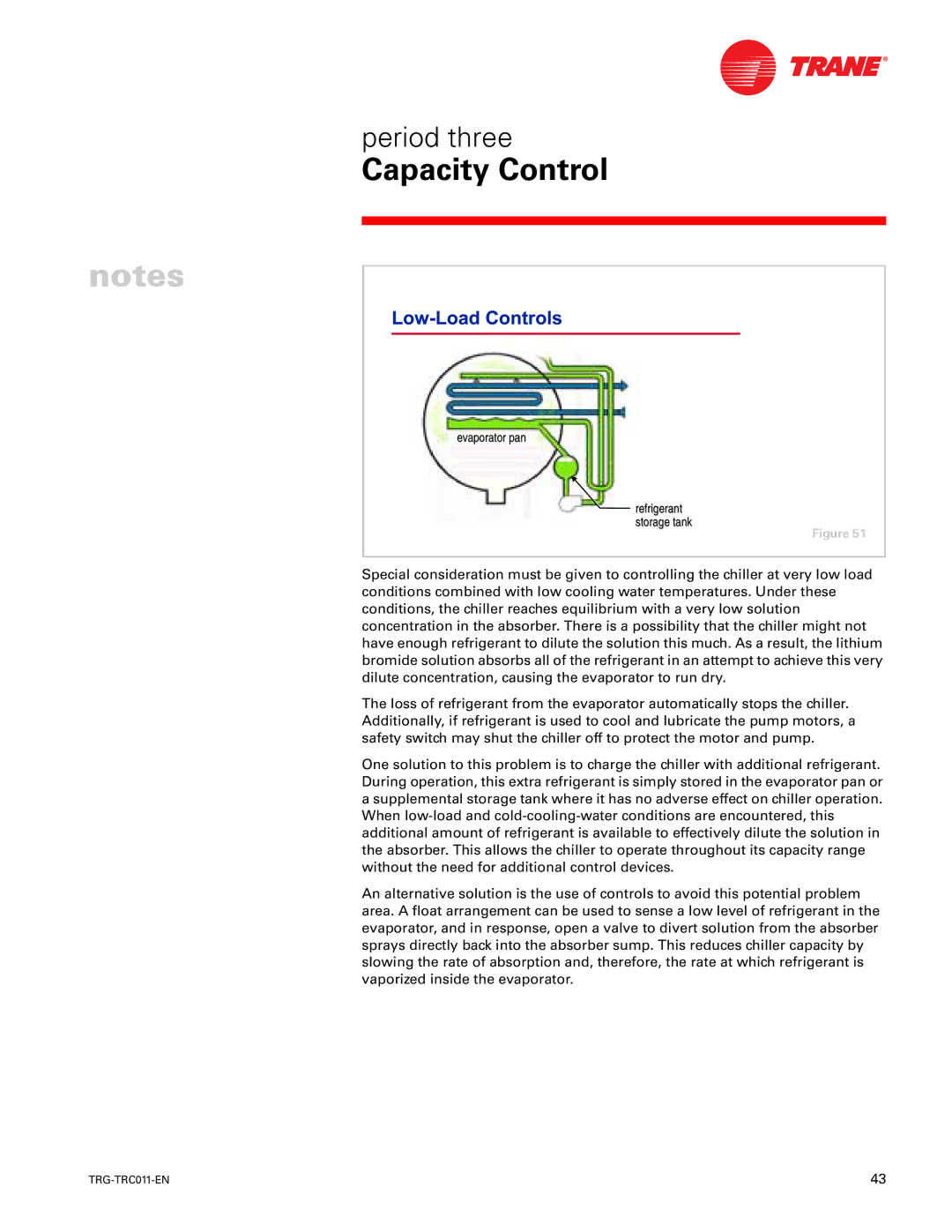
period three
Capacity Control
notes
evaporator pan
![]() refrigerant storage tank
refrigerant storage tank
Figure 51
Special consideration must be given to controlling the chiller at very low load conditions combined with low cooling water temperatures. Under these conditions, the chiller reaches equilibrium with a very low solution concentration in the absorber. There is a possibility that the chiller might not have enough refrigerant to dilute the solution this much. As a result, the lithium bromide solution absorbs all of the refrigerant in an attempt to achieve this very dilute concentration, causing the evaporator to run dry.
The loss of refrigerant from the evaporator automatically stops the chiller. Additionally, if refrigerant is used to cool and lubricate the pump motors, a safety switch may shut the chiller off to protect the motor and pump.
One solution to this problem is to charge the chiller with additional refrigerant. During operation, this extra refrigerant is simply stored in the evaporator pan or a supplemental storage tank where it has no adverse effect on chiller operation. When
An alternative solution is the use of controls to avoid this potential problem area. A float arrangement can be used to sense a low level of refrigerant in the evaporator, and in response, open a valve to divert solution from the absorber sprays directly back into the absorber sump. This reduces chiller capacity by slowing the rate of absorption and, therefore, the rate at which refrigerant is vaporized inside the evaporator.
43 |
